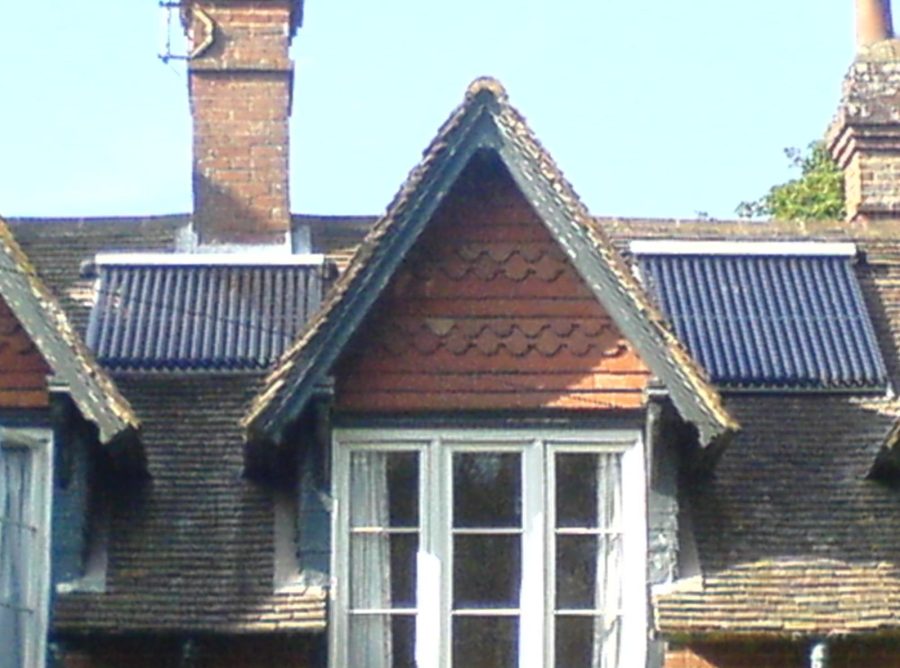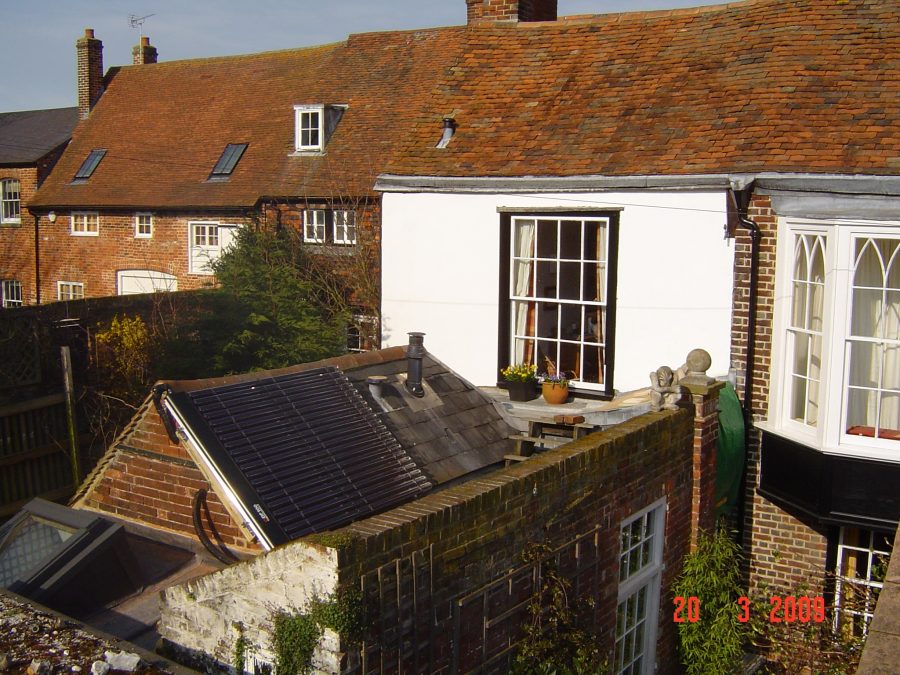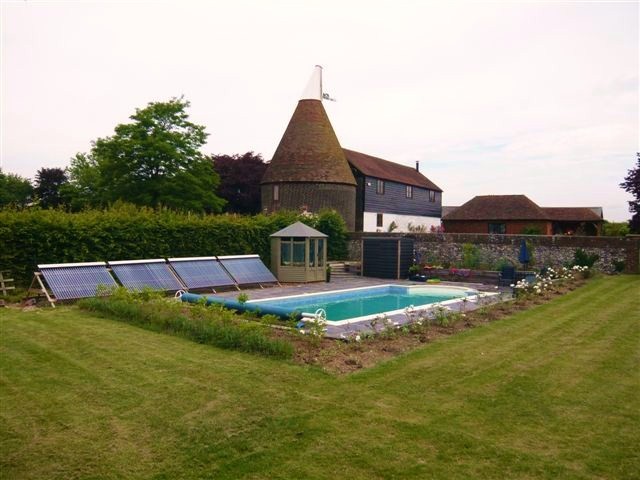Solar thermal

Our key design objective is to maximise the effective solar thermal contribution by sizing the collector area to achieve at least 70% domestic hot water (DHW) solar fraction, where possible. To achieve this we typically specify a hot water storage cylinder with two solar coils. Heat from the solar collector is firstly directed to the upper coil. Once the upper part of the cylinder reaches its target temperature, the controller diverts heat to the lower coil to complete charging of the remainder of the cylinder.
Because we target a high solar fraction we also build in overheating protection. This takes the form of a bypass circuit activated when the hot water storage attains its target temperature, typically when periods of high solar irradiation coincide with periods of low hot water consumption, e.g. summer holidays. This circuit is connected to a heat emitter, ideally satisfying a summer time heating requirement such as a swimming pool or a towel rail.

Solar thermal collectors can play a complementary role alongside biomass and heat pump systems, but they are unlikely to be the main source of heating and hot water (except in modern high efficiency buildings where the space heating requirement is minimal, e.g. Passivhaus standard of 15 kWh/m2 per annum).
Integrated alongside a biomass boiler, we would aim to size a solar thermal collector to contribute an annual solar fraction of up to 70% of the domestic hot water requirement. This means that outside of the heating season the boiler can be effectively shut down for a large part of the year, reducing maintenance and operating costs.

By offsetting the majority of the domestic hot water requirement a solar thermal collector can also help a heat pump to achieve a high seasonal performance factor. Except in winter when there will be a low solar contribution a heat pump will be able to operate efficiently at a low flow temperature.
Solar thermal can be used to provide heating for swimming pools by linking the collector to a heat exchanger in the filtration circuit. Providing an outdoor swimming pool is in reasonable proximity to the house, a large solar thermal array can be connected to both the swimming pool and the DHW storage cylinder. Whe the swimming pool is in operation the collector first satisfies the DHW load and then diverts the remainder of the heat to the swimming pool. When the swimming pool is out of season the collector diverts all the heat to the DHW cylinder. Overall this can achieve a relatively high DHW solar fraction.
